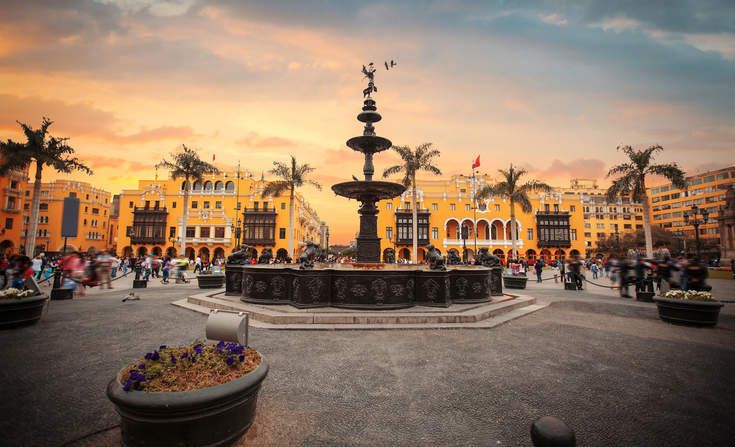Lima's Master Plan for Water and Green Infrastructure
Published on by Water Network Research, Official research team of The Water Network in Government
Lima is returning to nature by diverting 1% of water fees to restore Andean forests, grasslands and wetlands that provide critical 'ecosystem services' such as regulation of water flows.
As the city was both drowning and thirsting, it took concrete steps towards putting that money to work.

Lima, Peru, Shutterstock Skreidzeleu
Earlier this year, Peruvians were shocked when severe droughts gave way to tumultuous rains triggering landslides that killed at least 20 people, forced thousands from their homes, and — ironically — deprived many in the country’s two largest cities, Lima and Arequipa, of water when swollen rivers clogged treatment plants with rocks and debris.
The wet and dry seasons have been there for millennia, but natural forests, wetlands and man-made pre-Incan structures high in the Andes used to smooth those seasons out by absorbing water in the wet and slowly releasing it in the dry.
That changed over the last century as farmers and settlers cleared forests and wetlands to make way for urban areas and farming, leaving the cities downstream more vulnerable to natural disasters.
Now, Lima is returning to nature by diverting 1 percent of water fees to restore Andean forests, grasslands and wetlands that provide critical "ecosystem services" such as regulation of water flows. As the city was both drowning and thirsting, it took concrete steps towards putting that money to work.
The first step took place Feb. 7 and 8, when the city kicked off a 12- to 18-month planning phase that could chart the course for the next 30 years. Lima’s water utility SEDAPAL is attempting to develop a first-of-its-kind planning document focused on nature-based interventions: a Green Infrastructure Master Plan that seeks to leverage nature in ways that enhances and complements grey infrastructure.
The water utility quickly found, however, that such an undertaking is far from easy.
It’s never been done before
Not many planning documents explore how green interventions complement grey infrastructure, making this entire effort all the more unique.
This "master plan" that SEDAPAL is developing should help the company understand how it stands to gain from investments in green infrastructure and how these investments can benefit the company’s grey infrastructure, said Gena Gammie, associate director of the Water Initiative at Forest Trends.
Lima is the world’s second-largest desert city and Peru’s most populous city, with 9 million inhabitants drawing water from a complex system of pipes and tunnels. Four Andean watersheds serve the city: the Rimac, Chillon, Lurin and the Alto Mantaro. Water from the Alto Mantaro travels from the Amazonian side of the Andes to where Lima sits on the Pacific coast.
Asking the right questions
Experts agree that wetland and grassland ecosystems upstream of Lima help reduce erosion and are critical for soaking up heavy rains and then releasing water during dry periods.
But Lima also has several large reservoirs, raising several challenging questions: Should they, for example, focus on conserving the ecosystems around those reservoirs, thereby reducing sedimentation, or is it better to complement those reservoirs by working in ecosystems outside their catchment areas? What about the middle and lower parts of the watersheds that supply Lima with water? How effective and far-reaching is restoration in these regions?
Read more at: Green Biz
Media
Taxonomy
- Watershed Management
- Resource Management
- Water Access
- Water Resource Management
- Integrated Urban Water Management
- Environment
- Watershed
- Wetlands
- Urban Water
- Water Supply
- Water Management
- Infrastructure
- Reservoir